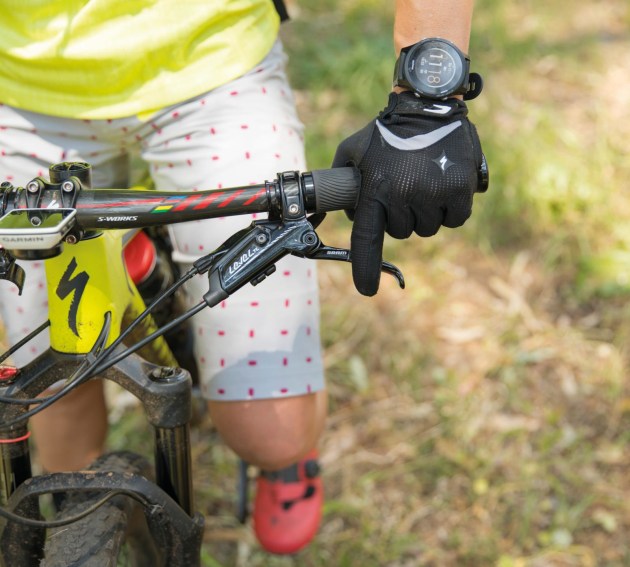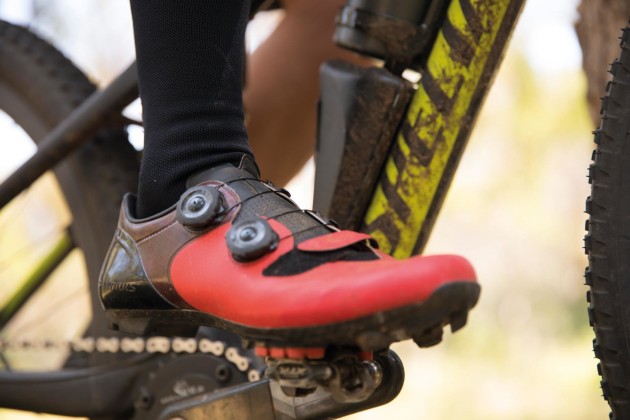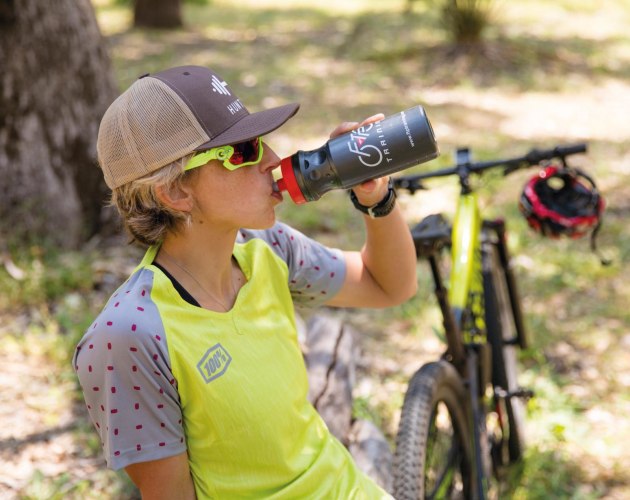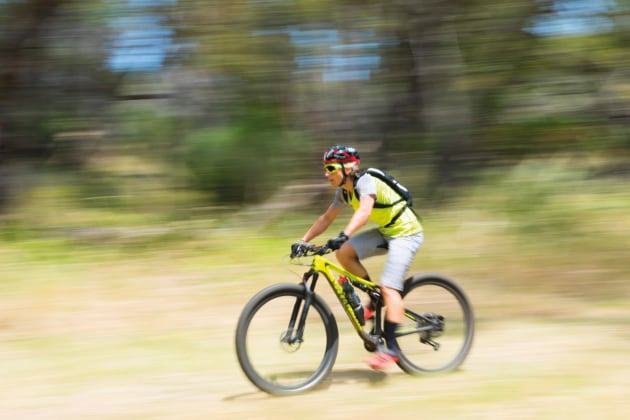If you are heading away on a mountain biking epic holiday, then you need to be ready. What exactly do I mean by ready? You need to have done some training, so riding for 4-7 days back to back doesn’t come as a complete shock to the body. This article isn’t going to focus on that, though, but there are a few key things worth pointing out:
1. Even if you are riding all downhill with lift/shuttles back to the top, you still need to get your body ready! Constant DH riding is very demanding on the upper body so getting in some cross training sessions at the gym as part of your ‘getting ready’ will really help.
2. If you are going to be riding more cross country, then your level of aerobic fitness is more important. Creating a solid level of base fitness will make your holiday so much more enjoyable, as you will be able to ride for longer without it feeling like you are going to die!
3. Don’t forget your core, for either style of riding, a strong core will help.
There are some things to consider before you leave; like is your bike ready for a week of non-stop action and is your kit up to the job? I would start to think about these things 4-6 weeks before you go, giving yourself enough time for the inevitable procrastination about what colour kit to buy, will it match you bike and any tinkering and tweaking that needs to be done to make your ride go without a hitch.
Bike
Service - If you are taking your own bike then get it serviced two weeks before you go. This will give you enough time to ride it before you go to check everything is ok, and if the bike shop need to order anything in for you, there won’t be a mad rush for it.
Grips - Are your grips up to the job of helping you ride in comfort for long durations? There are many brands of grips now that offer soft rubber or silicone grips - like ESI, for example - which dampen vibrations and provide cushioning. Grip choice is very much personal preference, and worthwhile experimenting with before you go on holiday.
Tools and spares
If you are riding with a group of mates then you may find you don’t need to double up on some kit, eg chain splitters, multi tools, pumps etc. This will take some planning within the group, but is definitely worthwhile, as you’d be surprised how much weight this stuff adds up to. If you are travelling overseas on your trip it might be the difference between just sneaking in under the baggage weight allowance or an excess baggage bill.
Clothing
Check you riding gear. Is it starting to wear out? Has the foam in the chamois packed down and become less spongy? Are the leg grippers saggy? If so, now is the time to go spoil yourself and invest in some really good quality knicks. There is nothing worse than having a pair of sad old knicks ruin a totally awesome holiday.
Eating
When you get to your holiday destination what can you do during your trip to make sure you have the best time and the most fun out on the trails? You may be having so much fun that you forget to eat and drink during the rides. Don’t do that! Eating and drinking during time in the saddle is important, especially during the last hour of the ride. Any ride over two hours you will need to eat during the ride. If you are not going too hard then you can get away with eating solid real food, if you are pushing the envelope then these solid foods will become more troublesome to digest so you could look to fuelling with a few gels and energy drink. You can digest up to 60-90 grams of carbs per hour (the smaller rider would be at the lower end of this range, whilst the bigger rider would be a the top end of this range). To give you an idea of how many carbs really food supplies you: a medium size banana contains about 27g of carbs, a white bread jam sandwich contains 40g of carbs. Remember that you are going to have to ride the next day, so you want to set yourself up for success on successive days, so finishing the day depleted will set you up for failure the next day. To have great successive days in the saddle you will need to have a good carbohydrate rich meal post ride, carbs such as rice, potatoes, pasta or quinoa will all fit the bill. Choose a good lean protein source as well to go with the carbs, and of course don’t forget your veggies. In reality post ride fuelling is simple; eat real food, healthy food, and don’t ignore the carbs! Sometimes, there is a time and a place for a recovery shake, and that would be if you have finished your day riding but you are a long transit from your destination and a good meal is a few hours away. In this scenario the easily available chocolate milk could be your go-to option to get the right amount of carbs and protein into your body to help repair muscles and replenish glycogen reserves so you are ready to have more fun tomorrow.
Hydration
This may seem like the 101 of riding, but you would be amazed how many riders still get this wrong! Drink to thirst is the number one aim here. The old ‘more is better’ approach here is definitely no longer the case. Excessive drinking of fluids low in sodium (usually water) can dilute the sodium levels in the blood causing a condition called hyponatremia. The symptoms of hyponatremia are also difficult to diagnose as they are very similar to the symptoms of dehydration, and can include nausea, muscle cramps, lethargy, headaches, weakness. The pitfalls of dehydration have been so well publicised over the years that many riders think they must continue to drink before they become thirsty, this has been disproved and can actually be dangerous if you drink too much. To keep yourself hydrated but not over hydrated, drink to thirst and take an electrolyte drink, especially if you are going somewhere really hot where you are likely to sweat a lot.
Sleep
You are on holiday, so nanna naps are totally ok! Short power naps have been shown to improve learning, reaction times and focus, so make the most of the time to nap your way to better riding. A nap of around 20 minutes is perfect, any more and you get into a deeper state of sleep that is much harder to wake up from and can leave you feeling drowsy afterwards. Getting a good night’s sleep is also really important for back to back days in the saddle. Try to get to bed early and don’t eat too late. Ideally wait three hours after dinner before going to bed. A dark room, a comfy mattress, a cool temperature, and not a lot of noise are the perfect conditions for the best night's sleep. If you are sharing a room with your mates then you might want to consider a good set of ear plugs – you never know, your best mate might be the loudest snorer!
Cool down and Recovery
A few simple techniques here will help speed up recovery and get the legs ready for another day of pedalling. Don’t finish your ride with an all out sprint to the café. Make sure the last 10-15 minutes of the ride are an easy spin. This gives your body a chance to cool down and enable the body to get fresh oxygen rich blood to the legs and carry metabolic waste out from the legs. After the ride, the ‘Feet up the wall’ is a super easy technique that anyone can do and all you need is a wall. There is a myth that elevating your legs after a hard workout will help drain lactate from the muscles in your legs. This has been disproved as the lactate has already been circulated around your body whilst exercising and as soon as fatigued muscles are given an oxygen rich environment the lactate disappears.
However, the legs up the wall is still a valid post riding protocol for a couple of reasons:
- It does help reduce swelling.
- It helps relax the body by enforcing some rest time.
- It helps reset the normal posture of the back and neck.
Contact points: bum, feet, hands
These three contact points can be optimised so your body can operate at its best without having to deal with any unwanted chaffing, pressure points or discomfort.
Hands – When you ride make sure you don’t have a vice-like grip on your handlebars. Try to relax your grip, this in turn will relax the shoulders and hopefully leave your upper body feeling less stressed at the end of the ride.
Feet – When you ride make sure your feet are relaxed. Are you toes all scrunched up during technical descents or hard climbs? Sometimes you may not even be aware of this, but you may notice your feet ache at the end of the ride. Momentarily take time to focus on your feet and see whether they are tense, if so try to actively relax the toes. Check in with your feet at intervals during the day to make sure the are still relaxed.
Bum – Take some good quality chamois cream with you, and don’t forget to use it! Some brands sell it in small sachets so you can take one with you to reapply during those extra long days in the saddle. You only need to apply a very small amount directly to areas that frequently chafe. And lastly, hopefully you all know the golden rule of knicks... you must wash them EVERY time you use them. Failing to do so turns them into a festering harbour for all sorts of nasties that I won’t mention. Wear more than once at your peril!
Pace Yourself
Hopefully you will have prepared for your trip and have built a good level of fitness to ride for multiple long days. However, it is important to not go too crazy on day one of your holiday and burn all your matches! Keeping something in reserve for subsequent days is important both mentally and physically. The excitement of the first day of the trip can result in some wild and crazy antics on the trails, but you want to be able to have equal amounts of fun on every day, so resist the urge to try to smash your mates up every climb or nail them on every downhill. After all this is a holiday not a race! You want to finish day one feeling comfortably tired, not all-out smashed. Keep this at the back of your mind when out on the trails, and you’ll have the best trip ever!










